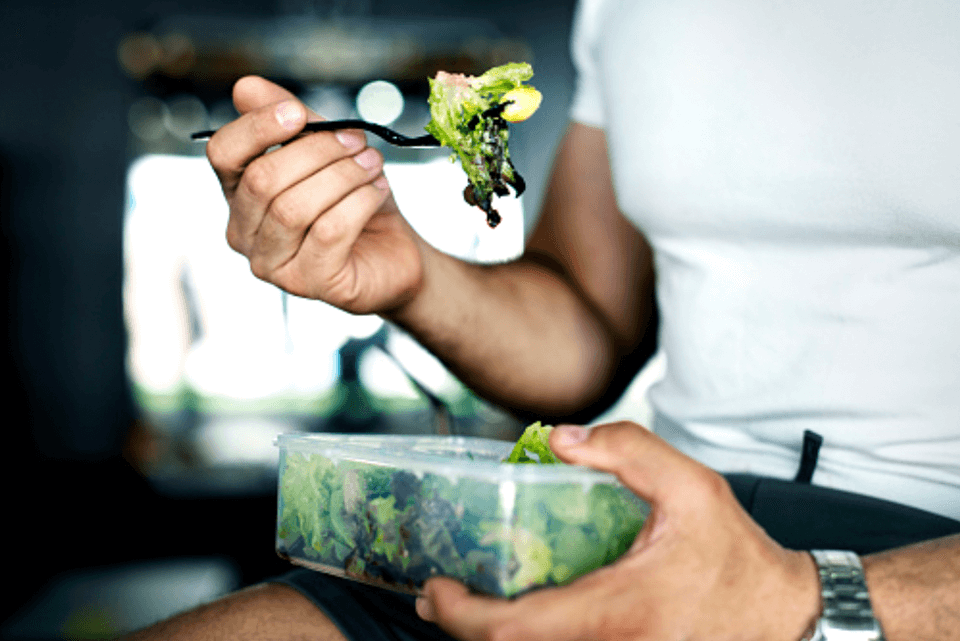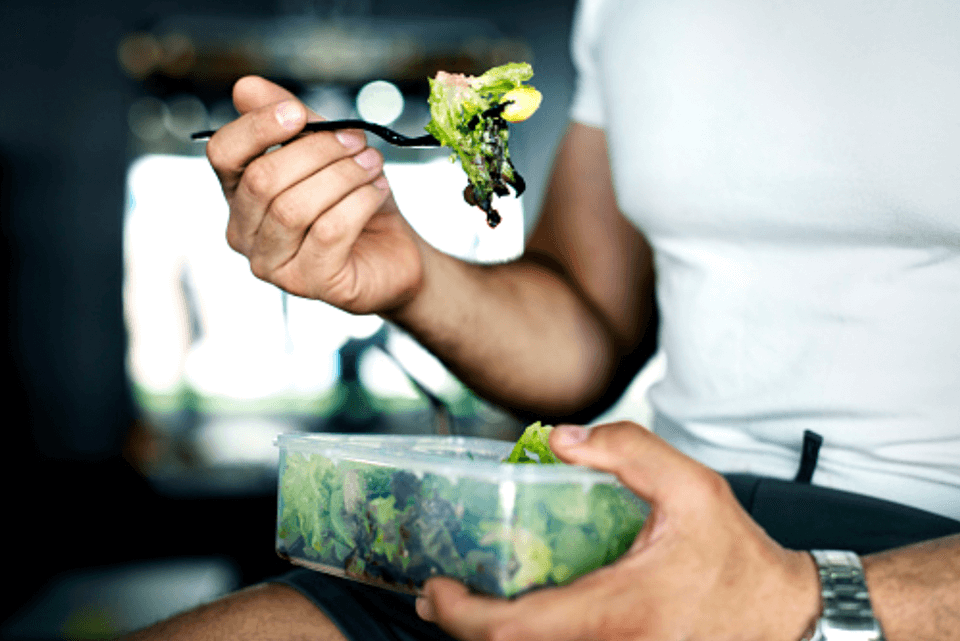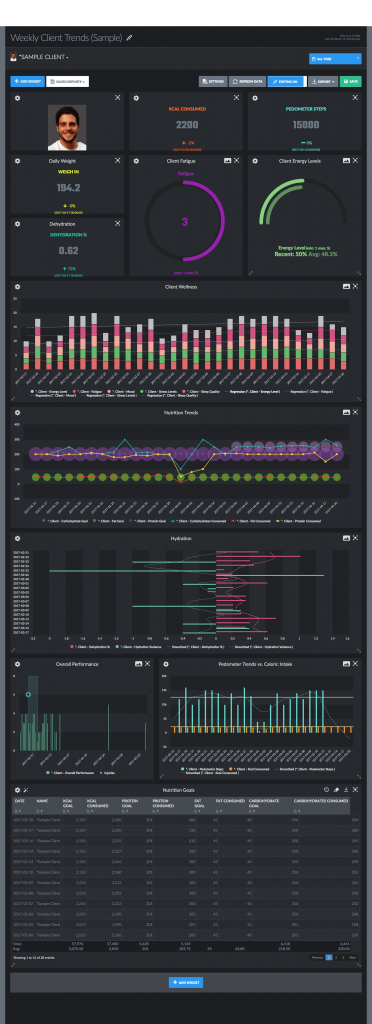
Integration of Performance Nutrition into An Athletic Performance Program
30th April 2018

As college athletic departments and professional teams recognize the need for a strong nutrition program, major investments have been made to provide high-level athletes with the proper fuel they need for success. At the highest level, gaining a competitive edge is critical for growth and success. However, the combination of training, skill, and elite genetics for high-level athletes sets a relatively even playing field. One of the ways athletes and teams can gain an edge is through performance nutrition. *See just how much The University of Nebraska has invested here: http://www.omaha.com/huskers/football/nebraska-and-other-top-programs-pay-big-to-keep-their/article_e44d8b1c-9a35-54ce-80bb-9e445dc70cfc.html.
This article will cover how to structure a nutrition education program into your athletic performance department by understanding time demands, providing practical information the athletes can use right away, and taking your program to the next level by providing the best foods and snacks to your athletes daily.
Understanding Time Demands
Understanding the time demands put on an athlete is very important when deciding what nutrition information is best to give first. A collegiate athlete’s day is hectic (to say the least) and all factors must be considered when presenting them with nutrition information. Below is a typical day for an in-season athlete:
7:00-7:30: Wake up/Quick Breakfast
7:30-8:30: Team Workout/Conditioning
9-12: Class
12-1: Lunch
1-2: Treatment
2-5: Practice
5-6: Dinner
6-8: Study hall or night class
8-11: Leisure time/study
11: Bed
As you can see, there is very little downtime in a college athlete’s day. Therefore, it’s important to remember what is optimal might not always be possible so you must look for key areas where you can educate the athlete to prepare for their crazy schedules. Early on, it can be helpful to share information such as breakfast tips for the dorm room, snacking before bed, and what to grab on the go before practice. This foundational information will help set them up for success in the next phase of the education process.
Practical Education
As you take nutrition education a step further, it is important to evaluate what resources the athletes have and to push your education towards what is practical for your athletes. Two of the best ways to do this is to personally take dining hall and grocery store trips with your athletes.
Dining hall trips are great because it allows you to get an idea of what the school offers your athletes and what options your athletes have when they go in. Use this as an opportunity to educate them on the different macronutrients and how to select from each category. For example, it will provide your athlete with a much stronger visual aid for you to walk them over to the pasta, bread, and fruits and explain the effect carbohydrates have on their body for performance than to simply talk to them about carbohydrates.
Grocery store trips are also a fantastic tool especially for athletes who live off campus. Let the athletes select the grocery store they would typically go to. Take the time to walk down each aisle with them and point them in the direction for how to make the best choices while answering any questions that they have. Breaking information up into categories of carbohydrates, fats, protein, and then snacks help the athletes to understand the differences between and purposes of each. Another great part of grocery store trips is that you can help the athletes save money, by giving tips on what to look for. Most of the time, athletes are grocery shopping for the first time in their lives on a limited budget and they don’t know where to look for savings and often operate with the myth that healthy eating is more expensive than unhealthy eating. Showing them where to purchase store-brand products, how to use coupons, and where to look for sales will help them get more bang for their buck and sustain healthy habits. After navigating the grocery store and the dining hall, leave your athletes with educational material that they can take with them and put into practice.
Short and Sweet: Setting up a Series of Bi-Weekly Presentations
One of the keys to success with nutrition education is to make a point of having frequent interaction with your athletes on the topic. If it is a high priority, it should be addressed more than once or twice a year. Breaking this up into bi-weekly presentations allows you to spread out your content and deliver key messages to your athletes, as well as keep their attention with shorter presentations. Below is an example breakdown of information that could be presented to athletes before their pre-season. Keep in mind that every situation is different and therefore presentations like these should be very specific to your teams’ needs and goals at a particular time.
- Overview of performance nutrition: covering the basics of macronutrients and how each plays a critical role in performance
- Packing and planning ahead: How to set your day for success when you are out and about all day
- Hydration
- Nutrient timing
- Easy recipes to cook at your apartment
- Sport Specific energy system needs
- Smart supplementation
- Tying it all together: Transitioning from offseason to in-season
Taking it to the next level
Due to the time demands placed on student-athletes and the lack of quick and easy nutrition options available, it is easy to see why universities are spending so much money on nutrition services for their athletes. While not every school has the budget to spend hundreds of thousands of dollars on nutrition, it is important to find what works for your budget. The more you can provide to the athletes to fill time gaps in their day the better. Below is a list of ways you can enhance your program.
Fueling Station
Fueling stations are popping up throughout the country and are a great option for providing snacks and recovery options for athletes throughout the day. Strategically placing the fueling station in a high traffic area, such as the weight room or outside the academic center or training room, is critical. Fueling stations provide the perfect opportunity for athletes to grab something while they are running from one part of their day to another and keeps their bodies fueled throughout the day. The cost for the fueling station is extremely dependent on what you are providing and how many athletes you are servicing. If you choose low-cost healthy products like granola bars, cheese sticks, granola, and fruit you can keep your per unit cost well under a dollar and service large groups of athletes. If your budget is a little higher you could provide items like peanut butter and jelly sandwiches, pre-packaged cereal and Greek yogurt. Your hours of operation for your fueling station should best serve the time of day the athletes spend the most time near your facility.
Post-Workout Recovery Products
This might be the most important enhancement you can make to your program. If every athlete receives some sort of post-workout recovery product after each training session you are helping them start the recovery process as well as providing a snack that will help bridge the gap between meals. There are hundreds of products out there so you will want to think about both quality and convenience. Ready-to-go protein/carbohydrate shake blends are perfect for athletes to take with them on the go. For schools with lower budgets, chocolate milk serves as a great alternative as well. Ready-to-go protein shakes run about $1.50-$1.75 a unit and chocolate milk is between 50-75 cents a unit.
Training Table
Training tables are fantastic if you have the budget to support it. This is where you are setting the athletes up for optimal success by providing one large meal per day. Most schools chose breakfast or dinner and schedule it around practice or workouts. This saves the athletes a lot of time as they transition from one part of their day to the next. Additionally, this is a huge advantage for teams with athletes who need to maintain or gain weight. The cost will vary significantly based on how many athletes you are serving.
All-You-Can-Eat Meal Plans
Most colleges have gone away from à la Carte and have opted for the all-you-can-eat meal plan. As mentioned earlier, it is key that you spend some time helping your athletes navigate the dining hall so they can maximize what is offered to them. The all-you-can-eat meal plan allows athletes to eat the number of calories necessary for their success throughout the course of the year.
Supplements
Food needs to come first and athletes should aim to get as much of their vitamins and minerals as possible through whole foods. However, providing resources such as NCAA-approved multivitamins can help ensure the athletes are getting everything they need to keep their body performing.
Advanced Solutions
This article covers global interventions for athletes, but what if you want to take things a step further? Individual attention to college athletes starts with tracking daily intake. The only way to get an understanding of what an athlete is consuming daily is to have them document everything including meals, snacks, and drinks. Applications such as MyFitnessPal allow an athlete to keep track of their intake and with Kinduct, you can create a form that is automatically sent to the athletes so they can transfer it from the app to the platform. This would allow your sports nutritionist or RD to be able to monitor this information alongside the athlete’s strength and conditioning and sports medicine information. Additionally, the Kinduct platform could help with daily hydration monitoring and weigh-ins and weigh-outs during critical time periods. During pre-season with practice, film, treatment, and workouts important pieces of information like this tend to slip through the cracks. This technology allows coaches, strength coaches, athletic trainers, and nutritionists to work together as a team to maintain the health and safety of each student-athlete.

Connecting the Dots
Investing time and money into your performance nutrition program can be a tremendous competitive advantage for your team and athletic department. Here’s a recap of how to do so effectively and efficiently:
Understand the time demands of your athletes.
Start with practical education so the athletes can get started right away.
Break up your education curriculum into bi-weekly presentations spread throughout the year.
Enhance your performance nutrition program by fueling opportunities for your athletes.
Consider advanced solutions to gain a competitive advantage
Focus on the strategies listed above and you will be on your way to maximizing the performance potential of each one of your athletes
About the author:
George Greene is a highly accredited and recognized Athletic Performance Coach. He graduated from Springfield College with a B.S in Applied Exercise Science and went on to earn a Master’s Degree in Health and Human Performance from Fort Hays State University. He is a certified and registered strength and conditioning coach through the NSCA, a certified specialist in sports nutrition through the ISSA, and a certified sports performance coach through USAW.
George’s greatest passion is pushing athletes to reach their genetic potential and has had the opportunity to work with both male and female athletes at the highest level. He is currently the Assistant AD for Athletics Performance at Stony Brook University on Long Island, NY and his experience includes work at The University of Mary Washington, The U.S Special Operations Command, The University of Massachusetts, and The University of Iowa. In his career, he has worked with several All-Americans, numerous All-Conference selections, and multiple athletes who have gone on to sign professional contracts in their respective sports. George can be reached on Instagram and Twitter @GreeneStrength
Related articles
Newsletter
Sign up here for the Movella newsletter and stay up to date about everything Movella has to offer.


